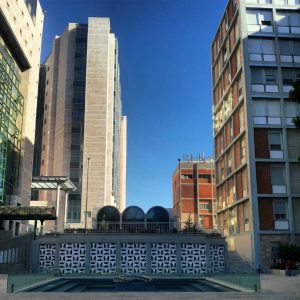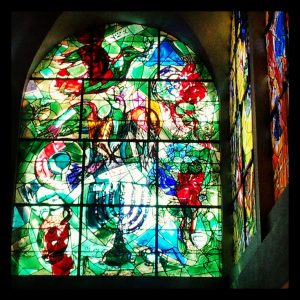Every group of people who strives to establish a firm and sustainable society has to go through a true fundamental change. A young society has to start like an organized group. To make it simple: This society has to establish a bureaucratic mechanism. I suppose it isn’t the most popular thing to say but bureaucracy is the beating heart of any social establishment. Every organization has employees or volunteers, every business has it’s own purpose and at the end of the day someone has to pay taxes. All trough human history Societies where accompanied by bureaucracy and any bureaucracy is based on information.
A similar process met the Israelites at the Sinai Desert and in our Parasha – Parashat Bamidbar, we are witnessing the establishing of Hebrew bureaucracy. As we said, information was needed and a census, probably the first in human history, was conducted. After counting, Moses and the heads of tribes found they had 603550 grown men (excluding the Levi tribe). Now they could start what we might call urban planning. The young Israeli nation held in its heart the ark of covenant and naturally the bureaucratic planning would be derived from this structure. According to the command of God the tribes settled around the ark of covenant in a square manner. To the east settled the tribes of Judah, Issachar and Zebulun, to the south: Reuben, Simeon and Gad, To the west: Ephraim, Mennasshe and Benjamin and to the north settled Dan, Asher and Naphtali (Numbers, 2, 1-32). The people of the tribe of Levi were in charge of the handling of the ark of covenant. It is interesting to know that this structure was held even when the tribes were traveling across the desert. It was a good solution that maintained law and order in the wilderness and enabled a successful forty years old journey in an uninhabited land while working towards creating a nation.
The structure of the Israelite camp inspired many artists (Jews and non Jews) throughout history. Following this inspiration led me to the synagogue at the Hadassah Ein Karem hospital.
In 1959 came the president of the Hadassah organization to Paris and there she met Marc Chagall. Hadassah, The women’s Zionist organization of America, was founded during Purim in the year 1912 by Henrietta Szold. The organization contributed (and still does) much to the development of a modern health system in Israel and established many hospitals and health centers. Towards its Jubilee the organization sought a way to commemorate its contribution and the idea of turning to Marc Chagall came up.
Marc Chagall was a world well known artist and he could not refuse this suggestion. Some say he was waiting for this kind of a suggestion to show up for a while, and he immediately came up with the idea of making a stained glass art for the central synagogue that was just being built in the Hadassah Ein Karem hospital. Chagall had to develop a new technique of glass painting for this art work. It took Chagall about two years to finish his work and the finished windows were displayed in New-York and Paris before being placed in their permanent home. Four of the windows had to be remade by Chagall after they were hit by shrapnel during the six days war. Chagall fixed the windows and said: “You should look after the injured soldiers; I will take care of the windows”. In the window dedicated to the tribe of Issachar, Chagall left a spot of unpainted glass as a commemoration of the destruction.
The Chagall windows depict the twelve tribes of Israel and Chagall who was educated in a typical east-European Cheder (Jewish orthodox traditional school) and had an intimate knowledge of the Jewish scriptures carefully picked every detail in each of the windows. He was inspired by Jacob’s blessing to his sons in Genesis 49 (parashat Vayehy) and from Exodus 28 where a description of the priestly breastplate (“the Hoshen”) and the color of its gems can be found. I believe Chagall learned about the connection between the gems and colors from the Midrash Bamidbar Raba, 2:7. There we can find a paragraph linking between Jacob’s blessing to his sons, the priestly breastplate, its gems and colors and the structure of the Israelites camp: “…Each of the presidents of the tribes had signs and a colored map with the colors of the gems that were placed on Aaron’s chest… Every tribe and president had a color resembling the color of its gem (Bamidbar Raba, 2:7). This connection between the portions encouraged Chagall to design the synagogue in a manner that will remind us of the Israelites camp structure. In the center of the synagogue stands a bimah (stage) that symbolizes the ark of covenant and around it we can find the windows that represent the tribes placed according to the words in the portion of Bamidbar. An interesting point is that Chagall chose to unite the Ephraim and Menasshe tribes under the flag of their father Joseph and thus made it possible for his to dedicate a window to the tribe of Levi, who didn’t own any land by the order of the Bible. The Holy Ark is placed under the window dedicated to Joseph.
The visual resemblance between the Hadassah Ein karem synagogue and the Israelites camp as described in Parashat Bamidbar shows us again the deep connection between our weekly portion and the streets of Jerusalem.


